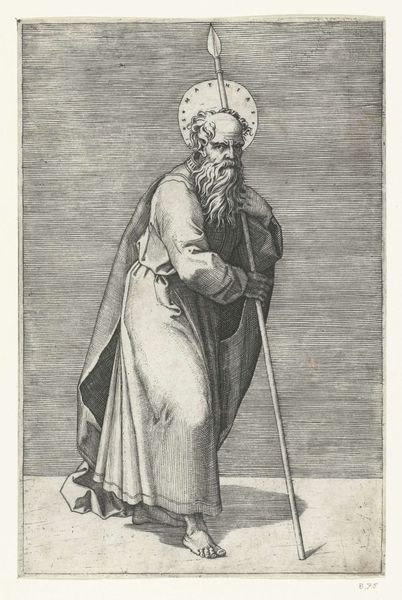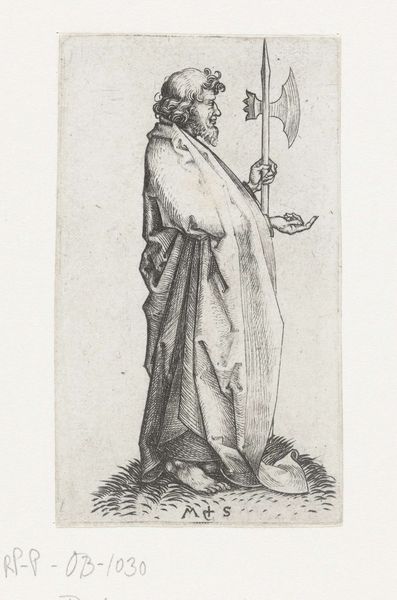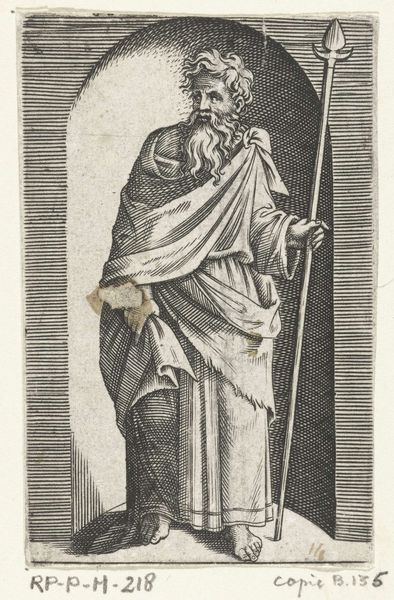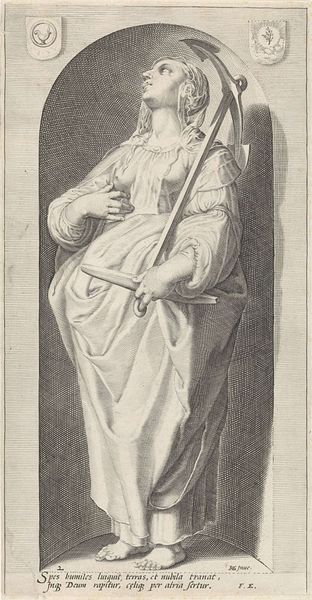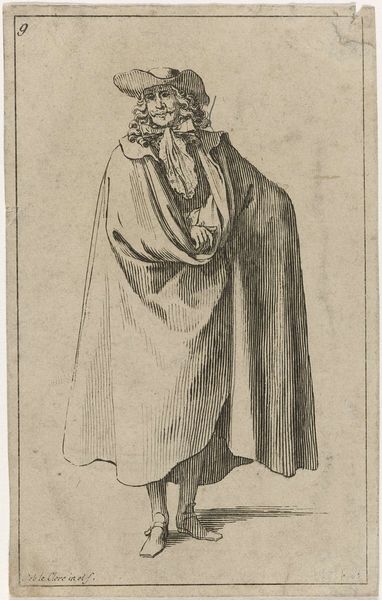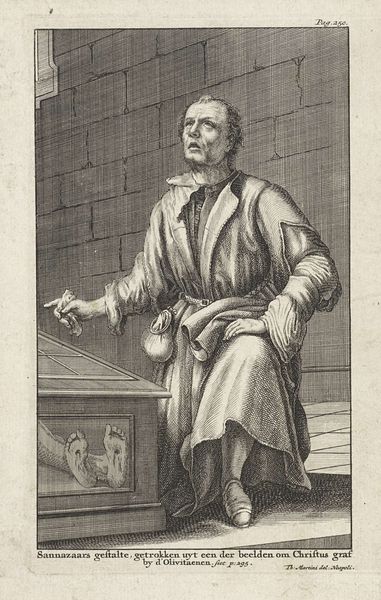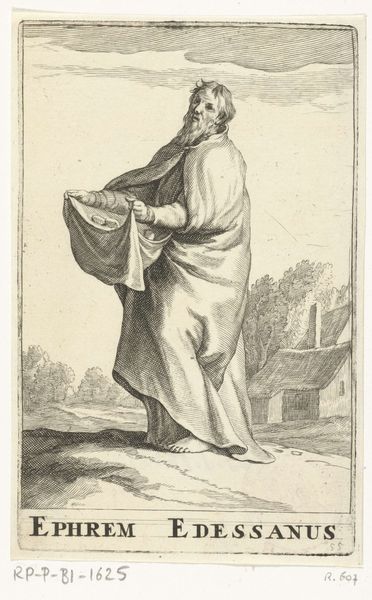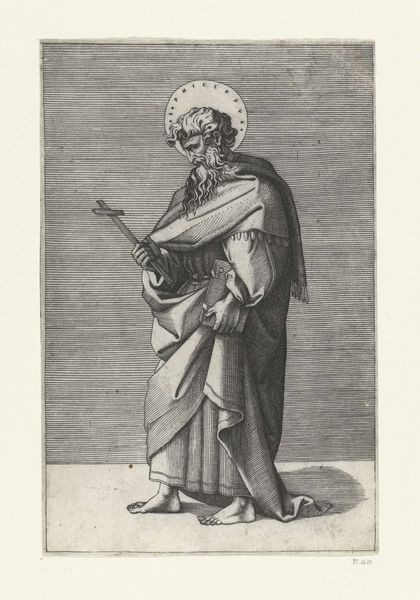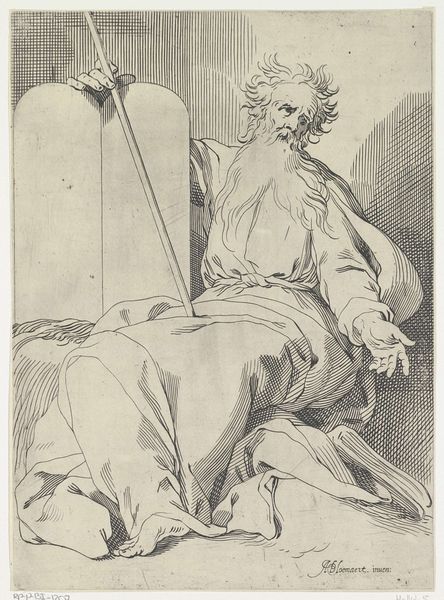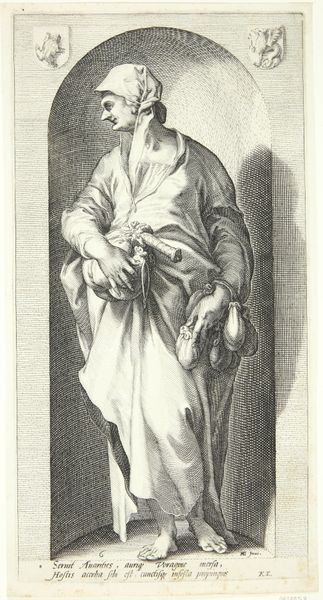
print, engraving
#
portrait
# print
#
old engraving style
#
11_renaissance
#
portrait drawing
#
history-painting
#
engraving
Dimensions: height 208 mm, width 125 mm
Copyright: Rijks Museum: Open Domain
Editor: Here we have Marco Dente’s “Apostle Matthias with Spear,” an engraving from the early 16th century. The stark lines and the somewhat severe expression on Matthias's face create a solemn atmosphere. I’m curious, what kind of social commentary or historical context do you think we can read into a piece like this? Curator: It’s important to consider the role of prints like this in the Renaissance. Engravings allowed for the wider distribution of images, especially during the Reformation. An image of an apostle, traditionally a figure of authority within the Catholic Church, could take on different meanings depending on who was viewing it, supporting or questioning existing power structures. What do you think a figure holding a spear might have communicated during this era of religious and political upheaval? Editor: That's interesting. The spear, being both a weapon and a symbol of authority, adds a layer of complexity. I suppose it depends on the viewer. A Catholic might see it as a defense of faith, while a Protestant could view it as an emblem of the corruption of religious power. Curator: Exactly. And look at the medium: printmaking. Consider the implications of making the apostle, a figure once confined to exclusive paintings, available to a wider audience through mechanically reproduced images. Doesn't this shift reflect a broader societal change in access to knowledge and authority? Editor: I hadn't considered that! It really highlights the changing landscape of image distribution during that time, making previously inaccessible religious figures much more public and open to interpretation. Thanks, that gives me a lot to think about regarding the social role of art during the Renaissance. Curator: My pleasure. It is vital to analyze how these images circulated and were received to fully understand their impact.
Comments
No comments
Be the first to comment and join the conversation on the ultimate creative platform.
